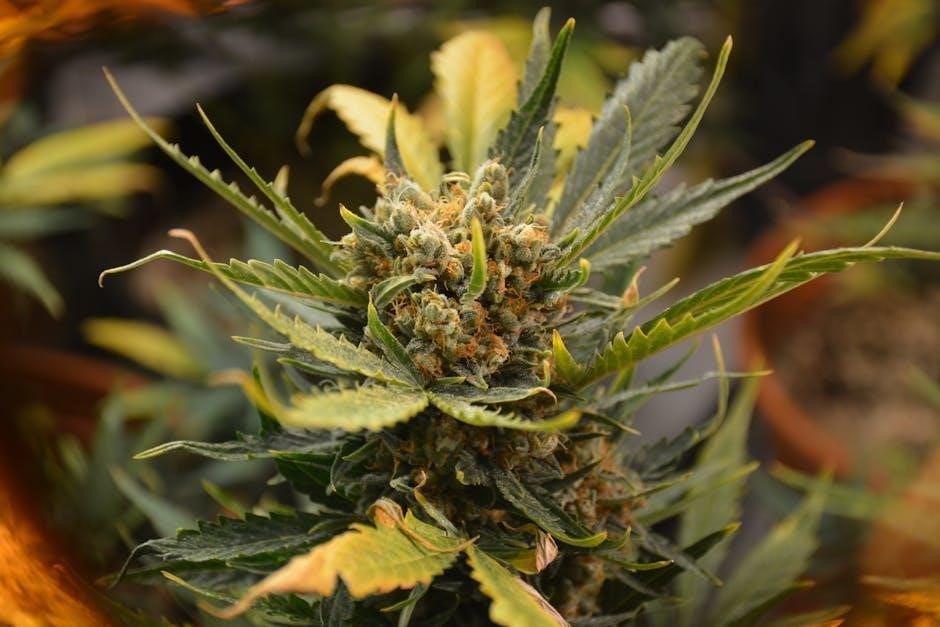grow 420 guide

Understanding 420 Culture
Understanding 420 Culture involves exploring its origins and significance in cannabis communities. The term emerged from a group of California high school students in the 1970s, known as the Waldos, who used “420” as a code for meeting to smoke cannabis. Over time, it evolved into a global symbol of cannabis culture, representing a shared identity and camaraderie among enthusiasts. Today, 420 is celebrated annually on April 20th as a day to embrace cannabis use and advocate for its legalization and normalization.
The Origins of 420
The origins of 420 trace back to the early 1970s in San Rafael, California, where a group of high school students known as the Waldos began using the term as a secret code for cannabis use. They agreed to meet at 4:20 PM by a statue of Louis Pasteur to search for an abandoned cannabis crop. Over time, the term gained popularity through connections with the Grateful Dead and became a widely recognized symbol of cannabis culture. Today, 420 represents a global movement, celebrating cannabis use and advocating for its legalization. It has evolved from a simple code into a unifying phrase for enthusiasts worldwide.
The Significance of 420 in Cannabis Culture
The significance of 420 in cannabis culture extends beyond its origins as a secret code. It has evolved into a global symbol of unity and advocacy for cannabis enthusiasts. Celebrated annually on April 20th, 420 represents a shared identity and a collective effort to normalize cannabis use. It has become a rallying cry for legalization, fostering community and solidarity among users. Beyond its cultural impact, 420 also signifies a shift in societal perceptions, promoting education and awareness about cannabis. For many, it is a day to celebrate freedom, creativity, and the plant’s potential benefits. The term has transcended its humble beginnings, embodying a movement that continues to grow and inspire change worldwide.

The Basics of Growing Cannabis
Mastering the basics of cannabis cultivation begins with selecting high-quality seeds or clones and understanding the plant’s life cycle. Ensure optimal growing conditions, including light, water, and nutrients, to promote healthy growth and maximize yield. Monitoring and adapting to your plants’ needs is crucial for a successful harvest. Start small, learn from experiences, and gradually refine your techniques to achieve the best results. Proper care and attention during each stage of growth will help you grow thriving, potent plants. Dedication and knowledge are key to becoming a skilled cannabis grower.
Choosing the Right Seeds or Clones
When starting your cannabis grow, selecting the right seeds or clones is crucial for achieving optimal results. Seeds offer genetic diversity and the potential for higher yields, while clones provide consistency and faster growth. Consider factors like strain type, growth characteristics, and THC/CBD content to match your preferences. Popular strains such as indica, sativa, or hybrid varieties cater to different needs. Ensure you source seeds from reputable breeders or clones from healthy, pest-free mother plants. Proper selection lays the foundation for a successful grow, so research and choose wisely to meet your desired outcomes. Quality starting material ensures robust growth and a bountiful harvest.
Understanding the Plant Life Cycle
The cannabis plant life cycle consists of four main stages: germination, seedling, vegetative, and flowering. Germination begins when seeds sprout, typically taking 1-3 weeks. The seedling stage follows, lasting 1-2 weeks, where plants develop their first leaves. During the vegetative phase, which can last 3-8 weeks, plants grow larger and develop their root system and foliage. The flowering stage, lasting 8-11 weeks, is when buds form and mature. Proper care during each stage, including light cycles, nutrients, and pruning, ensures healthy growth. Understanding this cycle is essential for timing harvests and maximizing yields. Each stage requires specific attention to optimize plant health and productivity, leading to a successful grow.

Equipment and Setup for Growing
Essential equipment for growing cannabis includes grow tents, LED lights, fans, filters, and nutrient solutions. Proper setup ensures optimal conditions for plant growth and maximize yields effectively.

Indoor Growing Equipment

Indoor growing requires specific equipment to create an optimal environment for cannabis plants. A grow tent or dedicated grow room is essential to control light cycles and maintain consistent conditions. LED grow lights are popular for their efficiency and spectrum adjustability, while HPS (High-Pressure Sodium) lights are effective for flowering. Proper ventilation is crucial, so invest in fans and carbon filters to manage odor and maintain air quality. Nutrients and pH meters are necessary for soil or hydroponic systems. Additional tools like thermometers, hygrometers, and trellises help monitor and support plant growth. Automating systems with timers and climate controllers ensures consistency and maximizes yields. Choosing the right equipment is key to a successful indoor grow setup.
Outdoor Growing Setup
Outdoor growing setups require careful planning to maximize natural conditions. Choose a location with ample sunlight (at least 6 hours daily) and good airflow to prevent mold. Soil preparation is crucial; test and amend the soil with organic matter to achieve the ideal pH for cannabis. Use containers or directly plant in the ground, ensuring proper drainage. Install trellises or support systems for plant stability, especially for sativa strains. Irrigation systems, like drip lines or soaker hoses, help maintain consistent moisture without overwatering. Regularly monitor for pests and diseases, and consider companion planting to deter unwanted insects. Outdoor grows thrive in warm, dry climates with temperatures between 65-85°F. Security measures, like fencing or camouflage, may be necessary to protect your crop. Proper site selection and ongoing maintenance are key to a successful outdoor harvest.

Plant Care and Maintenance
Proper plant care involves feeding nutrients, monitoring pH levels, and pruning for airflow. Regularly inspect for pests and diseases, ensuring timely intervention to maintain healthy growth and yield.
Nutrients and Feeding

Proper nutrient feeding is crucial for healthy cannabis growth and maximizing yields. Plants require balanced macronutrients like nitrogen (N), phosphorus (P), and potassium (K), with varying needs during different growth stages. During vegetative growth, nitrogen promotes leaf development, while phosphorus becomes more critical during flowering to support bud formation. Micronutrients like calcium and magnesium also play vital roles in plant health. Overfeeding can harm plants, so it’s essential to follow recommended dosages and monitor pH levels to ensure nutrient availability. Many growers use organic or synthetic fertilizers, depending on their setup. Additionally, flushing plants before harvest removes excess nutrients, enhancing bud flavor and aroma. A well-planned feeding schedule ensures robust, healthy plants and high-quality cannabis.
Pest Control and Prevention
Pest control is essential for maintaining healthy cannabis plants and ensuring a successful harvest. Common pests like spider mites, aphids, and whiteflies can damage plants and reduce yields. Early detection is key—regularly inspect leaves and stems for signs of infestation. Prevention methods include using fine-mesh screens, maintaining clean growing environments, and ensuring good air circulation. Organic solutions like neem oil, insecticidal soap, and predatory insects can effectively manage infestations without harming plants. Chemical pesticides should be used cautiously, as they can leave residues on buds. Quarantining new plants and tools helps prevent the introduction of pests. A proactive approach to pest control ensures plants remain healthy and thriving throughout their lifecycle.

Harvesting and Post-Harvest Techniques
Proper timing is crucial for maximizing potency and flavor. Trimming excess foliage ensures even drying, while curing in airtight containers preserves terpenes and enhances quality over time.
Timing Your Harvest
Timing your harvest is critical to ensure optimal potency and flavor. Most cannabis strains are ready to harvest between 60 to 90 days after flowering begins. Use a magnifying glass to inspect trichomes, which turn from clear to cloudy or amber when mature. For indica strains, harvest when trichomes are cloudy, while sativa strains may require a slightly longer wait. Harvesting too early can result in a less potent product, while waiting too long may lead to overripe buds. Aim to harvest when about 70-80% of trichomes are cloudy or amber for a balanced effect. Cutting plants in the early morning, when water content is highest, helps preserve freshness. Always follow breeder guidelines for specific strain readiness.

Drying and Curing Your Buds
Drying and curing are essential steps to preserve your cannabis harvest and enhance its quality. Start by drying buds on wire racks or paper in a cool, dark, well-ventilated area to prevent mold. Once dry, transfer to airtight containers for curing. Cure at 60-70°F with 60-65% humidity, opening jars daily to release moisture. Proper curing lasts 2-4 weeks, allowing buds to develop a smooth flavor and aroma. Over-drying can destroy terpenes, while under-drying risks mold. Regularly inspect buds during curing to ensure no mold forms. After curing, store in airtight containers in a cool, dark place for long-term preservation. This process ensures buds remain fresh and potent for months, making your hard work pay off with exceptional results.





